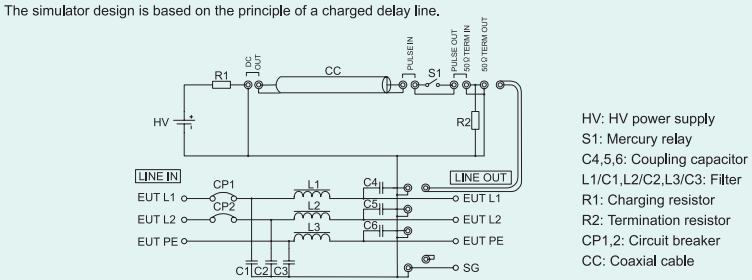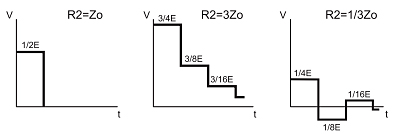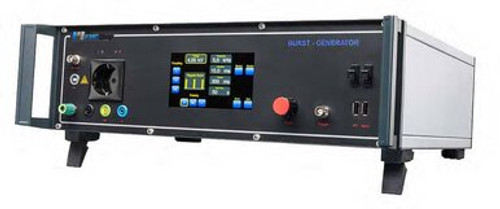Noiseken INS-4020 Overview
The NoiseKen INS-4020 Impulse Noise Simulator is a diverse tool to generate pulses to simulate electrical transients and the test parameters set out in compliance standards such as IEC 61000-4-4 and MIL-STD-461 CS115. It has an automatic ramp operation in output voltage, pulse repetition period and phase angle placement.
Complementary to the IEC61000-4-4, EFT/Burst test the NoiseKen INS-4020 with unique valuable features and capabilities, most of which are not met by Electrical Fast Transient/Burst generators, greatly helps to enhance your test program to ensure your products are really immune from real world phenomena.
INS SERIES ELECTRICAL SCHEMATIC

PULSE GENERATION PRINCIPLE
The main components of the pulse generator circuitry of this unit are coaxial cables, HV power supply, charging resistor, mercury relay, and terminating resistor. The coaxial cables form a distributed constant circuit consisting of the inductance of the inner conductor and capacitance between the inner and outer conductors. When this line is terminated by a 50Ω resistance, it works as a square wave pulse generator. Pulse widths vary depending on the delay time of the coaxial line (length of the cable). The proportion of pulse widths to the length is approximately 10 ns per meter. Pulse waveforms and amplitudes depend on the relation between terminator resistance and coaxial cable characteristic impedance.
The HV power supply charges up the capacitance component of the coaxial line through the charging resistor when the mercury relay is in off status. The stored energy is discharged when the mercury relay contacts turn on, generating a HV square wave pulse across the 50Ω terminating resistor. The injection unit couples this pulse through a capacitor to an EUT LINE. Also provided is a decoupling circuit consisting of an inductor and a capacitor, working as a high impedance circuit when seen from the injection point. This enables the unit to effectively couple the interference signals to the EUT and to reduce their leakage into the power supply side (LINE IN).
FOR PERFECT MATCHING
Pulse waveforms and amplitudes are dependent on the value of a termination resistor being connected to the PULSE OUT terminal. The figures and equation shown at the right show their relations. To generate square wave pulses, this unit adopts a 50Ω(strictly, 53.5Ω resistance ), an equal value to the characteristic impedance of the coaxial cables.
|
|
|
Vp=R2/(Zo+R2) x E |
| SPECIFICATIONS | |||
| INS-4020 (2kV) | INS-4040(4kV) | ||
| Output voltage | 0.01 ~ 2.00KV ±10% with 50 ohm load, 10V step | 0.01 ~ 4.00KV ±10% with 50 ohm load, 10V step | |
| Polarity | Positive or negative | ||
| Square wave | Pulse width | 50ns, 100 ns, 200ns, 250ns, 400ns, and any combination thereof, maximum width, 1µs or 10ns±3ns (the shortest connection) | |
| Pulse rise time | < 1ns | ||
| Output impedance | 50 ohm system (53.5 ohm) | ||
| Pulse repetition mode | VARIABLE | 10ms ~ 999ms±10%, 1ms step | 16ms ~ 999ms±10%, 1ms step |
| PHASE | 50 or 60Hz, Injection phase angle 0~359°, 1° step, synchronized with L1 - L2 power line frequency for EUT | ||
| EXT | >10ms, Pulse width>1ms TTL/Open collector negative logic |
>16ms, Pulse width>1ms TTL/Open collector negative logic |
|
| Also functions for timing reference signals input from an external injection unit | |||
| 1 SHOT | Single pulse injection to the angle selected by PHASE setting, or irrelevant with the EUT line frequency | ||
| Memory | Up to 5 test settings | ||
| Power capacity of equipment under test | AC 240V, DC60V, Single phase, DC60V 16A | ||
| Power supply | AC100 ~ 240V 50/60H | ||
| Power consumption | 140VA | ||
| Operating temperature and humidity | 15~35°C / 25~75% (No dewing shall occur.) | ||
| Dimensions | (W) 430 X (H) 249 X (D) 420 mm(Projections excluded) | ||
| Weight | Approx. 19kgs | ||
















